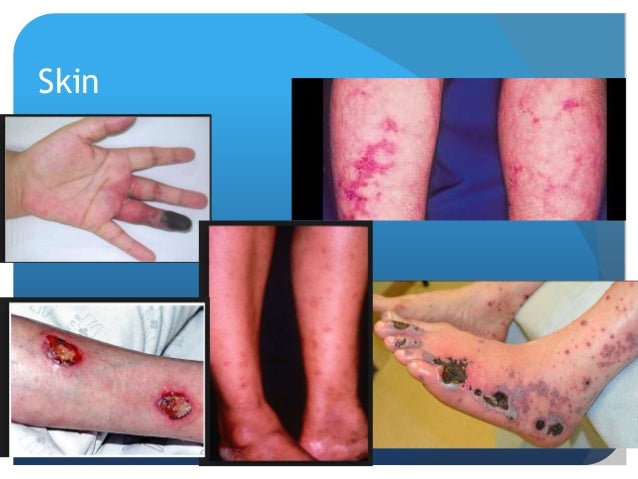What Is Polyarteritis Nodosa?
Polyarteritis nodosa (PAN) is a condition that causes swollen arteries. It primarily affects small and medium arteries, which can become inflamed or damaged. This is a serious disease of the blood vessels caused by an immune system malfunction.
Ongoing treatment is crucial, and there’s a risk of serious complications for people who have it and don’t seek medical care.
What Are the Symptoms of Polyarteritis Nodosa?
PAN ultimately affects all of your organs, including the skin. It can also affect your central nervous system.
The symptoms of PAN are quite pronounced and may include:
- a decreased appetite
- sudden weight loss
- abdominal pain
- excessive fatigue
- fever
- muscle and joint aches
According to Johns Hopkins, PAN affects the nervous systems of up to 70 percent of people. Without medical treatment, PAN can cause seizures and neurological issues, including reduced alertness and cognitive dysfunction, after two to three years.
Skin lesions are also very common. PAN most often affects the skin on the legs, and the sores can be painful.

What Are the Causes of Polyarteritis Nodosa?
Your arteries carry blood to your tissues and organs. PAN is characterized by damaged arteries that impede the flow of blood to the rest of your body. When your organs don’t receive enough oxygen-rich blood, they stop working the way they should. This type of arterial damage occurs when your immune system attacks your arteries. There’s no one identifiable cause for this immune reaction, so the exact cause of PAN also remains unknown.
Who Is at Risk for Polyarteritis Nodosa?
While the exact cause of PAN is unknown, there are many factors that can increase your risk of developing the disease. PAN is more common in people who:
- are 40 or older
- are male
- have an active hepatitis B or C infection
It’s important to understand these risk factors and talk to your doctor about receiving regular tests. This is especially true if you experience symptoms of PAN or if the condition runs in your family.
How Is Polyarteritis Nodosa Diagnosed?
PAN is a complicated disease that requires multiple tests before your doctor can make a proper diagnosis. Your doctor will likely order a complete blood count to measure the number of red and white blood cells you have.
You may also undergo:
- a tissue biopsy, which involve taking a small sample of an affected artery for laboratory examination
- an arteriogram, which is an X-ray of the arteries
- an erythrocyte sedimentation rate (ESR) test to measure inflammation
Most people with PAN have elevated ESR results. According to Johns Hopkins, skin and muscle or nerve biopsies can be helpful when making a diagnosis.
Once these tests are complete, your doctor will formulate a diagnosis and treatment plan.
In some cases, doctors may mistake abdominal pain and gastrointestinal side effects for inflammatory bowel disease. For this reason, it’s important to report any long-term gastrointestinal effects to your doctor right away.
What Are the Treatment Options for Polyarteritis Nodosa?
The most common treatment for PAN is a combination of prescription drugs, including:
- corticosteroids
- immune suppressants
- antiviral medications
High doses of corticosteroids, or steroids, control the symptoms of PAN by reducing inflammation and replacing certain hormones in the body. Corticosteroids can cause a number of side effects, especially when they’re taken in the oral form.
Corticosteroids can help keep your immune system from attacking your arteries, but other types of immunosuppressive medications may be necessary. This is especially true if your PAN symptoms are severe.
People with hepatitis infections primarily receive antiviral medications.
What Are the Complications Associated with Polyarteritis Nodosa?
Conditions affecting the blood vessels are very serious. Damaged arteries can ultimately affect your brain, heart, and other vital organs.
The most common complications of PAN include:
- a heart attack
- a stroke
- severe intestinal damage
- kidney failure

Post a comment